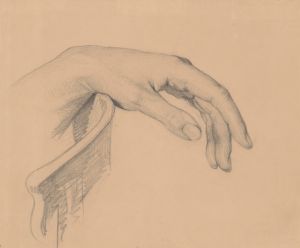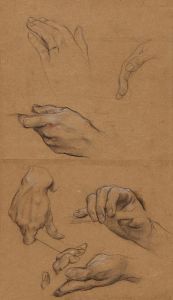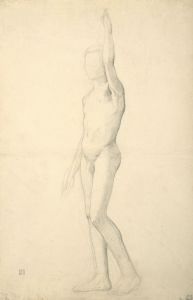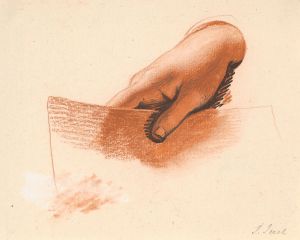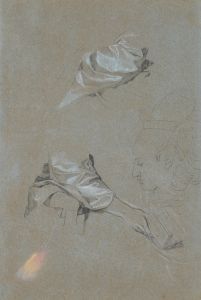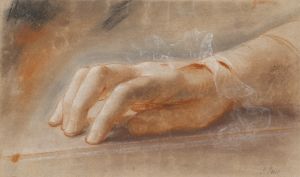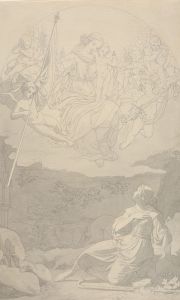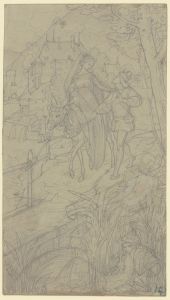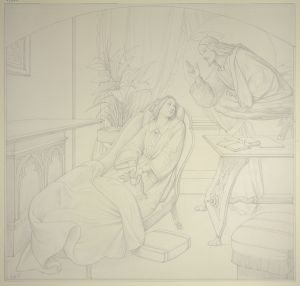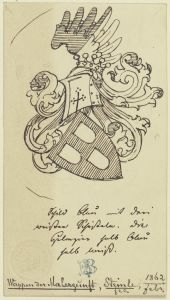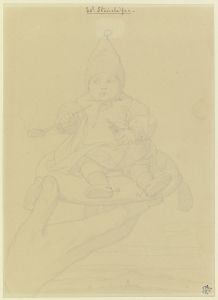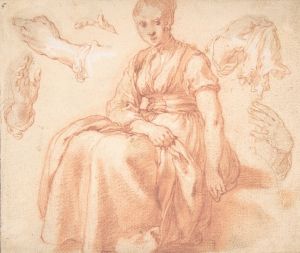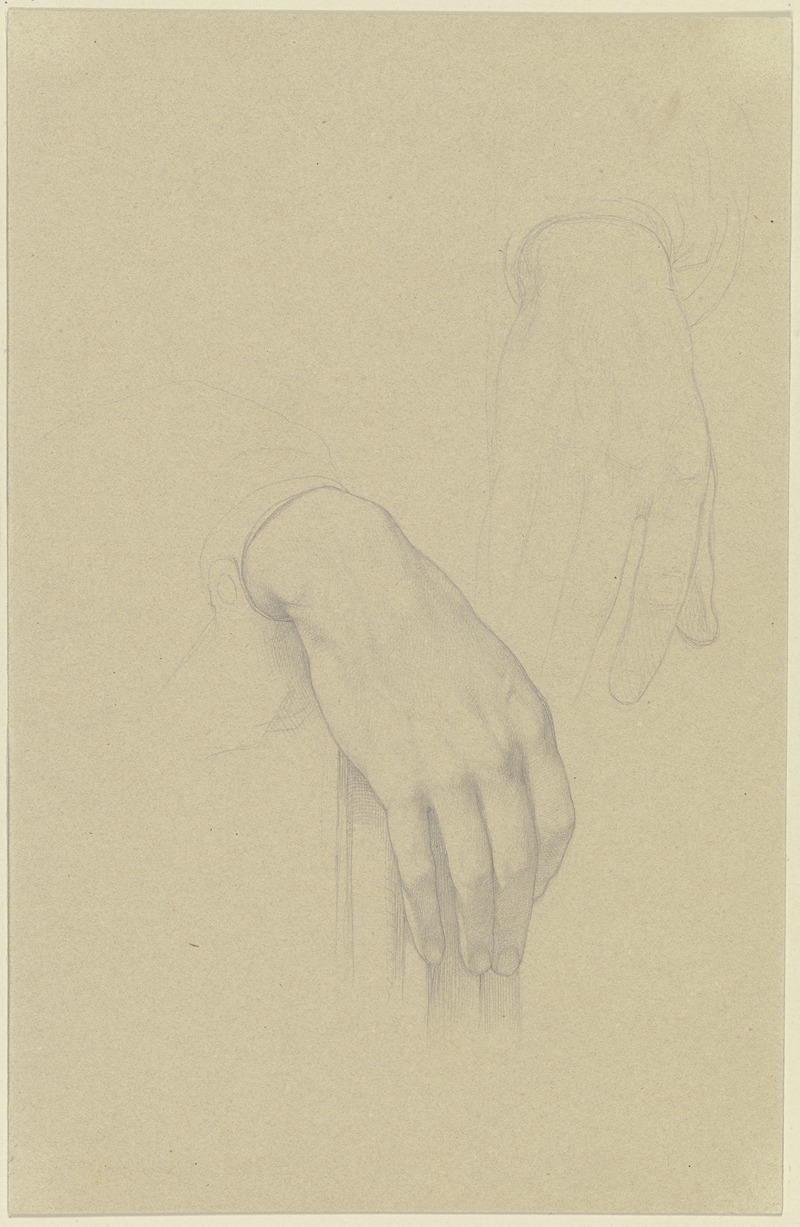
Die schön geformte rechte Hand eines Mannes, auf der Lehne eines Stuhls ruhend; daneben die Skizze einer derberen Hand
A hand-painted replica of Eduard von Steinle’s masterpiece Die schön geformte rechte Hand eines Mannes, auf der Lehne eines Stuhls ruhend; daneben die Skizze einer derberen Hand, meticulously crafted by professional artists to capture the true essence of the original. Each piece is created with museum-quality canvas and rare mineral pigments, carefully painted by experienced artists with delicate brushstrokes and rich, layered colors to perfectly recreate the texture of the original artwork. Unlike machine-printed reproductions, this hand-painted version brings the painting to life, infused with the artist’s emotions and skill in every stroke. Whether for personal collection or home decoration, it instantly elevates the artistic atmosphere of any space.
Eduard von Steinle (1810-1886) was a notable German painter and illustrator associated with the Nazarene movement, which sought to revive honesty and spirituality in Christian art. One of his works, "Die schön geformte rechte Hand eines Mannes, auf der Lehne eines Stuhls ruhend; daneben die Skizze einer derberen Hand" (translated as "The beautifully shaped right hand of a man, resting on the back of a chair; next to it the sketch of a rougher hand"), is a fine example of his detailed and thoughtful approach to drawing.
This piece, as the title suggests, focuses on the study of hands, a common practice among artists to refine their skills in depicting human anatomy. The drawing features two distinct hands: one is elegantly formed and rests on the back of a chair, while the other is a rougher sketch, possibly indicating a different character or a different aspect of the same hand. The contrast between the two hands may reflect Steinle's interest in exploring different textures, forms, and the expressive potential of human anatomy.
Steinle's work is characterized by meticulous attention to detail and a deep sense of spirituality, which is evident even in his studies and sketches. His involvement with the Nazarene movement, which he joined in Rome, influenced his artistic style significantly. The Nazarenes aimed to return to the purity and simplicity of early Renaissance art, and this influence is visible in Steinle's precise and almost reverential approach to his subjects.
The drawing of the hands likely served as a preparatory study for a larger work or as an exercise in mastering the depiction of human anatomy. Studies like these were common among artists of the time, as they allowed them to practice and perfect their technique. Steinle's ability to capture the subtleties of the human form is evident in the delicate rendering of the beautifully shaped hand and the more robust sketch of the other hand.
Eduard von Steinle's contributions to art extend beyond his drawings and paintings. He was also a respected teacher and influenced many students during his tenure at the Städel Institute in Frankfurt. His legacy includes not only his own works but also the impact he had on the next generation of artists.
In summary, "Die schön geformte rechte Hand eines Mannes, auf der Lehne eines Stuhls ruhend; daneben die Skizze einer derberen Hand" exemplifies Eduard von Steinle's skill in anatomical studies and his dedication to the principles of the Nazarene movement. The drawing highlights his meticulous attention to detail and his ability to convey the expressive potential of the human form through careful observation and rendering.





